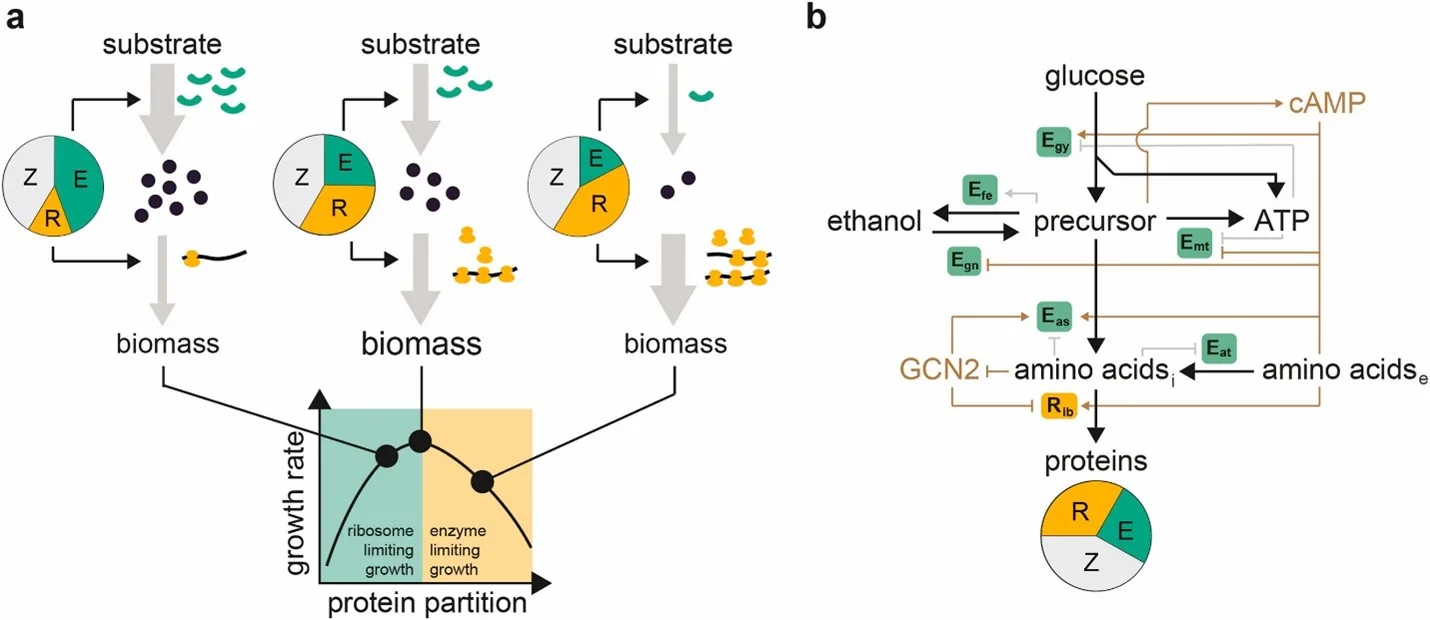Controlling Circuitry Underlies the Growth Optimization of Saccharomyces cerevisiae
Themes: Conversion
Keywords: Metabolomics, Modeling
Citation
Nguyen, V., Xue, P., Li, Y., Zhao, H., Lu, T. Sept. 21, 2023. Data from: “Controlling Circuitry Dictates the Growth Optimization of Saccharomyces cerevisiae.” University of Illinois Urbana-Champaign. DOI: 10.13012/B2IDB-8315352_V1.
Overview

Microbial growth emerges from coordinated synthesis of various cellular components from limited resources. In Saccharomyces cerevisiae, cyclic AMP (cAMP)-mediated signaling is shown to orchestrate cellular metabolism; however, it remains unclear quantitatively how the controlling circuit drives resource partition and subsequently shapes biomass growth. Here we combined experiment with mathematical modeling to dissect the signaling-mediated growth optimization of S. cerevisiae. We showed that, through cAMP-mediated control, the organism achieves maximal or nearly maximal steady-state growth during the utilization of multiple tested substrates as well as under perturbations impairing glucose uptake. However, the optimal cAMP concentration varies across cases, suggesting that different modes of resource allocation are adopted for varied conditions. Under settings with nutrient alterations, S. cerevisiae tunes its cAMP level to dynamically reprogram itself to realize rapid adaptation. Moreover, to achieve growth maximization, cells employ additional regulatory systems such as the GCN2-mediated amino acid control. This study establishes a systematic understanding of global resource allocation in S. cerevisiae, providing insights into quantitative yeast physiology as well as metabolic strain engineering for biotechnological applications.
Data
Illinois Data Bank includes:
- Growth rates
- Strains
- Plasmids
- Oligonucleotides